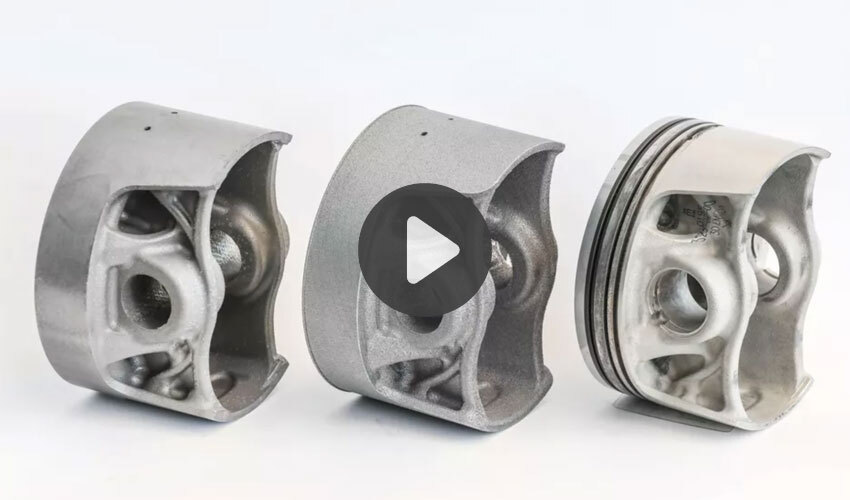Top 5 Videos: Porsche 3D prints pistons

This week we found the top 5 videos about 3D printing and the way additive manufacturing is changing production. The technology has infiltrated many sectors, from medical to automotive – check our selection of the week to keep up with the innovations! If you enjoy these, you can view even more 3D printing videos on our Youtube channel. Hope you’ll enjoy and have a great Sunday!
Top 1: Porsche 3D prints pistons
For the first time, the pistons for the high-performance engine of the Porsche 911 GT2 RS are being produced using additive manufacturing! 3D printing allows the pistons to be fabricated with a structure that is optimized for the loads acting on them. As a result, the new pistons are ten percent lighter and have a higher stiffness than the traditionally manufactured ones.
Top 2: Superstrata 3D printed unibody bike
Arevo and Superstrata have just unveiled new 3D printed unibody bicycles, unique in both the design and properties. By using carbon fiber reinforced thermoplastics, Superstrata can boast being extremely impact-resistant and lightweight – according to the company, one bike weighs less than 2 water bottles or 1,3 kg. Furthermore, Directed Energy Deposition (DED) 3D printing technology also enables a perfect customization. Each frame can be custom produced to fit the individual’s body type.
Top 3: Automated post-processing for metal AM
There is one stage of the 3D printing process that is not being discussed too often and it is post-processing. Even though it is probably not the hottest topic, the process is extremely important, and not easy. The 2-year project to automate post-processing for metal AM was conducted as part of an R&D collaboration between Inspire AG, ETH Zurich and Gressel. What did the researchers come up with? Find out in the video below!
Top 4: 3D printed cast
In contrast to a traditional plastic cast, which does not allow the skin to breath and is rather heavy, the new additively manufactured cast is made from entirely biodegradable plastic, it is light and let the air in. Developed by a Hungarian IT expert, the 3D printed cast is already being used in a hospital in Budapest. The hospital’s chief medical officer believes the new cast is more comfortable for patients and would only take around one hour to print, its approximate cost being from 50 to 100 euros.
Top 5: Powder Bed Deposition and Metrology
Material Scientist Mike Kirka of Oak Ridge National Laboratory gives an overview of the powder bed manufacturing and metrology capabilities at the Department of Energy’s Manufacturing Demonstration Facility. Some of their industrial collaborations include machine manufacturers such as GE Additive. According to Mr Kirka, they also face some challenges, for instance, qualifying and certifying components.
What did you think of these videos? Drop a comment below or on our Facebook and Twitter pages! And don’t forget to sign up to our free weekly Newsletter to keep updated on all the latest news in the 3D industry coming straight to your inbox!







